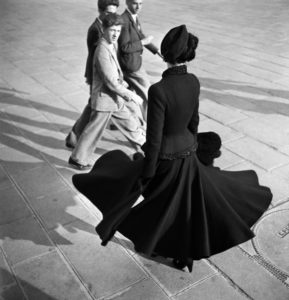
Richard Avedon
Richard Avedon was an influential American fashion and fine art photographer. His iconic portraits of celebrities, spanned more than half of the 20th century, and included Marilyn Monroe, Audrey Hepburn, The Beatles, Andy Warhol, and Tupac Shakur. “My portraits are more about me than they are about the people I photograph,” he once observed. Perhaps Avedon’s biggest stylistic impact was his decision to have his subjects emote—initially working during a time when the prevailing trend had been to present portraits that were still and subdued, his photographs stood out with their intimate viewpoint. Born on May 15, 1923 in New York, NY, he studied under Alexey Brodovitch at his Design Laboratory at The New School. Avedon got his start working for magazines, landing a job at Vogue in 1964, first as a staff photographer under famed editor Diana Vreeland, and then as its head photographer from 1973–1988. Outside of his fashion work, Avedon is also known for his series capturing American Western figures such as drifters, miners, cowboys, and others living on the edges of society. A series of these images was later published as the book In the American West (1985), which is widely considered a seminal work in the history of photography. He died in San Antonio, TX while on assignment on October 1, 2004 at the age of 81. Today, the artist’s works are held in the collections of The Museum of Modern Art in New York, the Art Institute of Chicago, the Fotomuseum Winterthur in Switzerland, and the Victoria and Albert Museum in London, among others.


Richard Avedon pays homage to the legend Martin Munkacsi



















Sorry, the comment form is closed at this time.


Swaroop
https://www.youtube.com/watch?v=nNWe_vHAQ5s
Swaroop
Before Avedon started in the studio, he spent many years photographing fashion editorials in the streets with just himself and the models. It was one of the things that frustrated him early in his career – that fashion magazines had all this money yet they wouldn’t give him a studio or an assistant on shoots. It wasn’t until later in his career when the landscape of fashion photography changed did he get the big budget studio setup. The framing of him only coming from a world of expensive studios and lots of assistants and stylists, etc. and into one of just him and a few assistants, isn’t 100% accurate. He was a master of light and could make anyone look like a piece of artwork in whatever conditions he was put in. So his minimalist approach to photography in the western America collection wasn’t too far off from his experience.